Please view these information tabs to learn about our Mechanical Clock Chimeblock and Rods
Why we offer only the complete chime-block
We now only offer the complete clock chime-block and rods. The rods are a press fit into the chime-block by machines and it is difficult to get a single rod out. Other times there are threads that go into the block but have such a secure tight fit, you cannot remove them.
Trying to do so would result in more rods breaking. Also there are various threads on the rods that are the replacements and it can create much confusion. It is for these reasons that we now offer the complete clock chime-block and rods.
Overall, it is a tricky thing to get the correct thread size for the individual rod in a chime-block and rod set and have it fit perfect. Not to mention, when the chime-block rod is not the correct size, often enough it gets sent back. Then we get into the situation of trying to swap it out over and over.
Moreover, all of it eventually ends up being a return for a complete chime-block and rods set. So, in the long run it is best to just get a new chime block and rod set from the beginning. That will save a lot of time and frustration.
Chime-block and rods volume
The volume of the clock chime is not alterable by means of the chime-block and rods or the hammer adjustment. These parts have nothing to do with making the clock louder or softer. The only thing that can make the clock louder or quieter is to move the clock case.
If the clock is on a hard wood surface it will be louder. A rug will be quieter. The proximity to the wall can also alter the sound. It has nothing to do with the chime-block and rods.
Clock Chime Block Styles
The first step in purchasing a new chime block is to determine the chime block style that is in the clock.
The Styles are side, bottom and back strike.
Figure out which style you need. Then, count how many rods are in the chime block. Measure through the chime block to get the length of the longest rod.
Correspondingly, find this information on the drop down list for the correct chime block and rods.
Bottom Strike Style A
Chime block style A For bottom strike and side strike units.Side Strike Style B
Chime block style B For side strike units. Occasionally, you can also use this for back strike diagonal Westminster units.
Back Strike Style C
Chime block style C is for floor clock models (and some wall clocks) with two rows of hammers on the back of the clock movement.
Chime sound in Clock Chime Block Styles
No matter which Clock Chime Block Style you need, there has to be some adjustments made. If the clock chime does not have a clear, crisp tone, do not panic. It could just be a matter of adjusting the hammers on the rods.
The hammer heads are on wires which are meant to be bent. Do this with your fingers, while the hammer head is down.
Just bend the wire that the hammer head is on, one at a time. Keep the hammer head about 1/8” from the rod when it’s at rest. In other words, in the up position. Bend one at a time.
Then, lift and drop it to see if there is a nice crisp tone. Subsequently, do this right down the line with each hammer on whatever chime block style. Make sure each one has a nice tone. In the long run, the chime will sound perfect.
Why does Chime Hammer Positioning Need to Occur
Mechanical clock chime hammer positioning is easy to do. It only involves bending the hammer head wires. Upon the initial installation, this was done by the clock maker as well.
When replacing a clock movement you need to bend the chime hammers to the chime rods. This is why the hammer heads are on bendable wires.
They are meant to be bent into the perfect position. It is not uncommon to bend them an inch this way or that way. The clock movement will not have the hammers in the perfect spot to make the correct sound when hitting the rods. This is why chime hammer positioning is so important.
Clock Chime Hammer Positioning
A mechanical clock movement has hammers that need to be bent into their final position. The correct clock-chime hammer position needs the tops of the hammer heads to be about 1/4 inch down from the chime block.
The hammers need to be 1/8 inch away from the rod. This would be when it is at rest. In other words, bend the hammer wires so the head is 1/8 away from the chime rod. This spacing between the head and the rod is so it will not thud or double strike.
Tuning the mechanical clock chime
Repeat this process for each wire, one hammer at a time, down the line. Continue in this manner until you can lift and drop the hammer to create a crisp sound. If each hammer head is done this way the clock will have a nice song in the end.
Often a customer will say the sound is not correct. This is due to improper hammer positioning. When performing the above directions correctly the sound is beautiful.
Positioning the 340 / 341 series
The 340 and 341 Hermle clock movement series went through a change in the hammer wires. The hammer heads were on wires, but now they are made on flat bars. The positioning is still the same, however it is a little more difficult to bend them.
The hammer head is on the skinny end of the bar. The bar gets wider as it goes back toward the roll pin.
With needle nose pliers, bend this bar where it goes from skinny to wide. The overall assembly will be slightly higher from the chime block. That is, if you are swapping out the movement with the older style wire hammer head rod.
It is an option to raise the entire chimeblock with a shim to help with this. It is not an absolute requirement. Bending the hammer arms are usually sufficient.
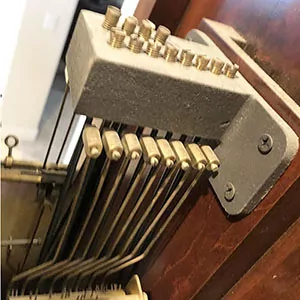
For a clean crisp chime sound
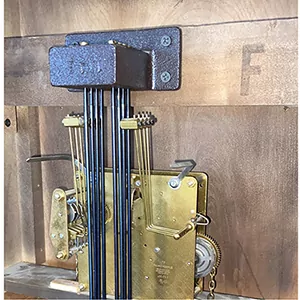
Adjust the hammer wires
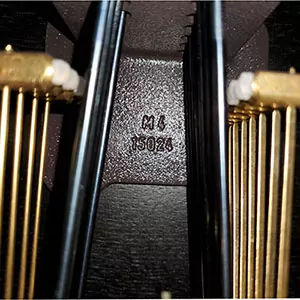
Should be about 1/8 away at rest
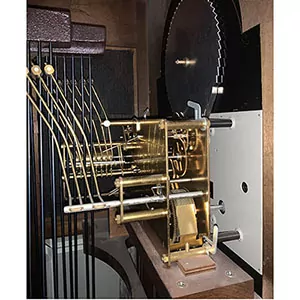
Sometimes they are bent to the extreme


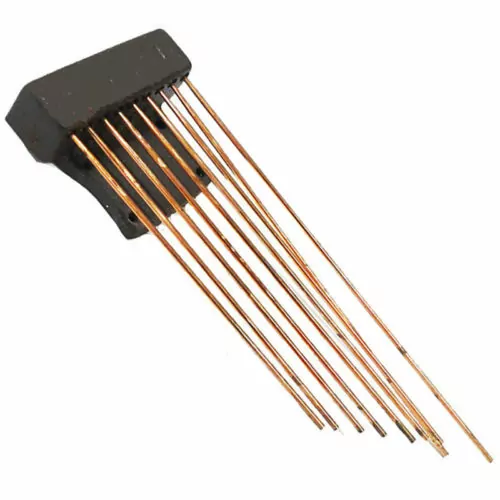
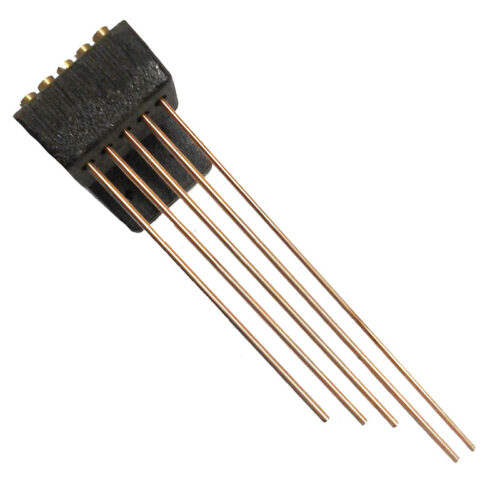

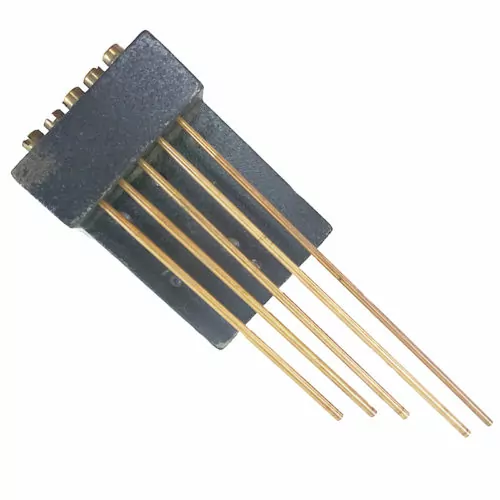

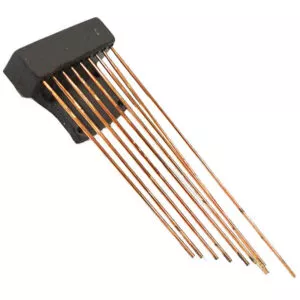
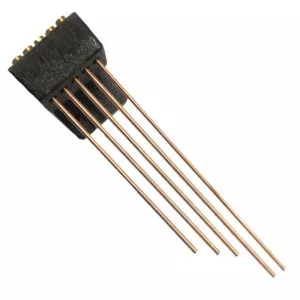


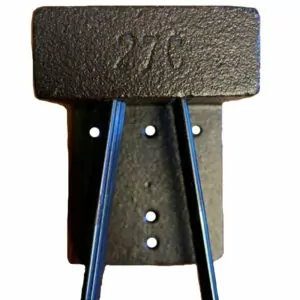

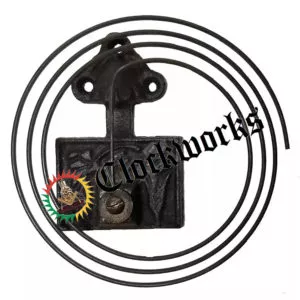











On your 5 rod 9 3/4 legnth chime block you show a number of different block how do you tell which block is the one you want or correct one?? Don’t see any numbers or letters or descriptions of blocks.
The image shows at least three different types of blocks do I get to choose?
No
Each length has there own base style
[image: 20151220_115157.jpg]
I need a bottom strike chime block, the longest rod is 7.75″ and there are 9 rods in the block. The notes on the ones shown indicate either 5 or 8 rods but the picture shows 9. Just wondering if there are 8 or 9 rods in the block?
Yes and now it is added as a product on the drop down list.
need set of four tuned chime rods with max length 26 inches, 6.5mm nut
Hi
Sorry I do not have your exact requirements unfortunately